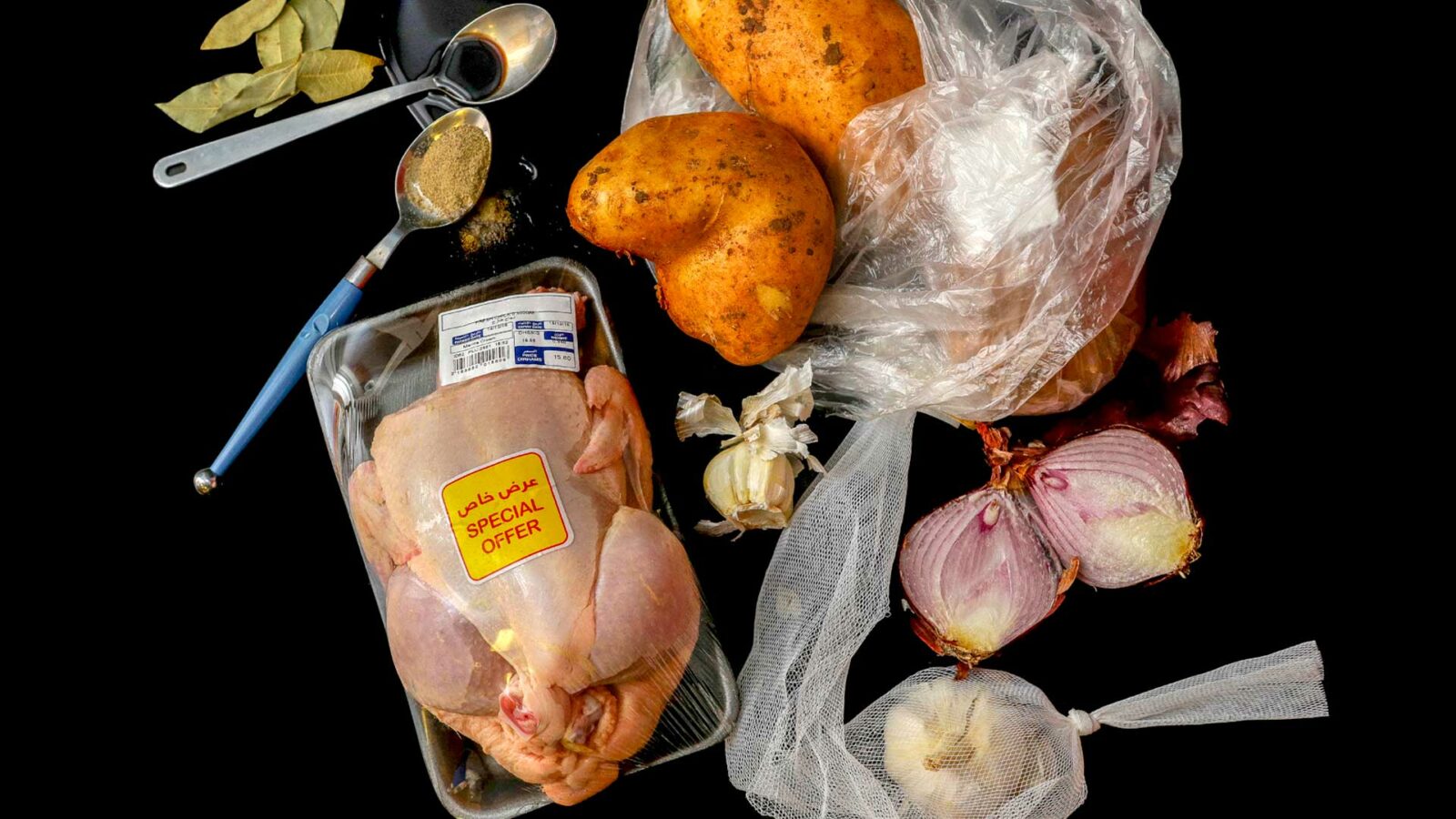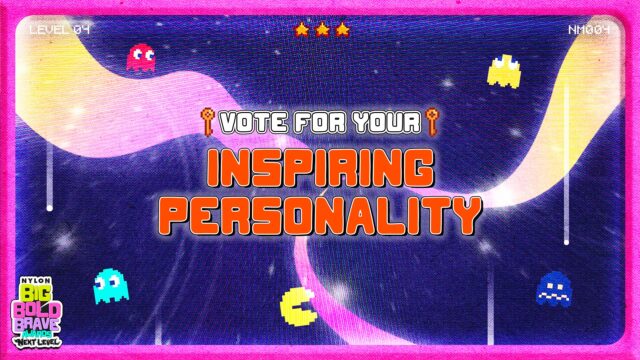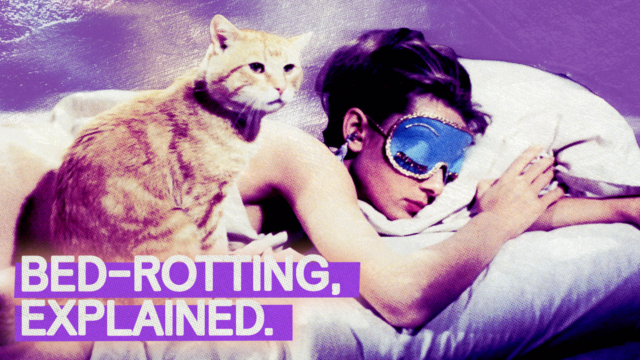Following a successful debut of his work, Cooking Adobo in the Hea(r)t of 25.2048° N, 55.2708° E in Art Dubai 2019, Dubai-based Filipino artist, Augustine Paredes serves up a saucy storm with his visuals, narrative, and lest we forget, feelings.
Related: MEET THE CREATIVE MAKING BOOTLEG TOYS OF FILIPINO POP CULTURE ICONS
As they always say, the more personal the story, the more difficult it is to tell. Not just limited to the context of art, this nugget of wisdom has parlayed itself to life in general, where everything from the harrowing tales of our unique and individual day-to-day, to the cold, distant, and unimaginable conditions of migrant workers in their quest for a better future for their selves and their families, quote-unquote.
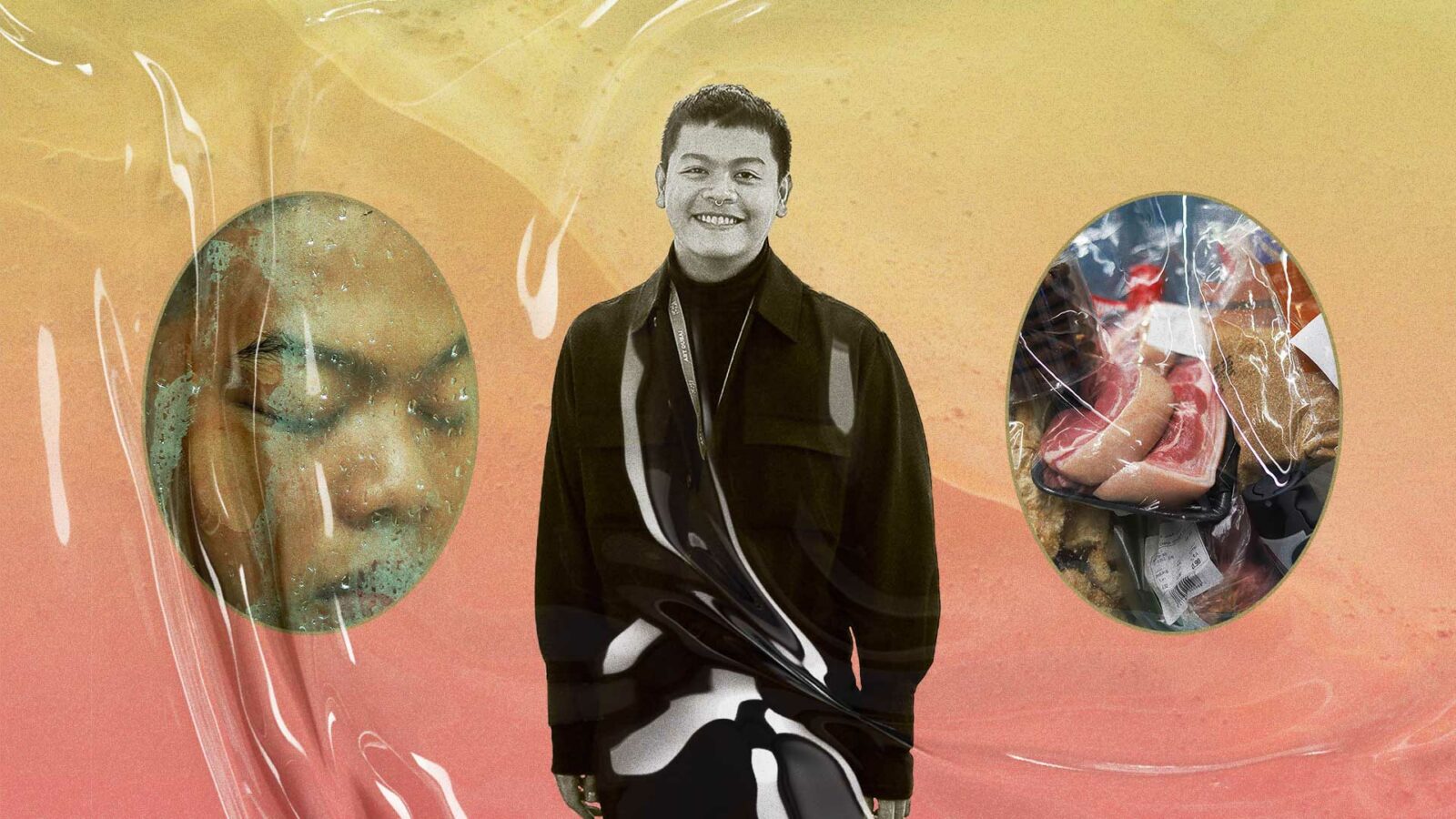
We’ve all heard stories of overseas Filipino workers. Heck, it has been heavily dramatized on many a film and teleserye for us to realize that far from the familiar warmth, comforts, and love from home, these brave souls who hustle in the realest sense of the word are modern-day heroes keeping many things afloat at the same time—their families, the economy, and lest they forget, themselves. It can be hard living a veritable world away from home, which is perhaps why they find comfort in the tangible forms of familiar at their disposal, such as an immediate Filipino community, noontime TV shows typically left on as white noise in the cacophony of a typical Pinoy lunch, and for an unapologetically passionate few, art.
“It was, definitely,” says Filipino artist and photographer, Augustine Paredes, when asked how his current visual narrative, Cooking Adobo in the Hea(r)t of 25.2048° N, 55.2708° E, was a difficult story to tell. “Most importantly, more difficult to let out to the world. I feel like all personal stories are.” Those familiar with the artistic ethos of Paredes (whose works have been exhibited internationally and in titles such as Vogue Arabia, Harper’s Bazaar, Harper’s Bazaar Arabia, Madame Magazine France, Brownbook Magazine, WKND Magazine, Conde Nast Traveller, The Huntr, among others,), will notice a distinct growth to his photographs and accompanying snippets of stories. While the current effort still grapples with the familiar making sense of time and identity, as seen in previous pursuits such as How Strangers Meet and The Lonely Transit, this one is grounded, conceptual, and provocative yet wrapped in a welcome restraint that is a result of his nomadic episodes, as well as with certainty, his tenure as a creative in Dubai over the course of two years. “It was different, because I had to be more rigorous than my usual feelings-based body of work. I had to read different text, [go through] consultation and dialogue. Whereas before, I would just sit down with myself and do it. Now, with all my art, thus the long process, I shower myself with critical text,” he says. “Being part of Campus Art Dubai (an intensive program, with workshops and seminars for six months) twice, really helped me become more critical and rigorous with my body of work. ‘Di na puros feeling lang.”
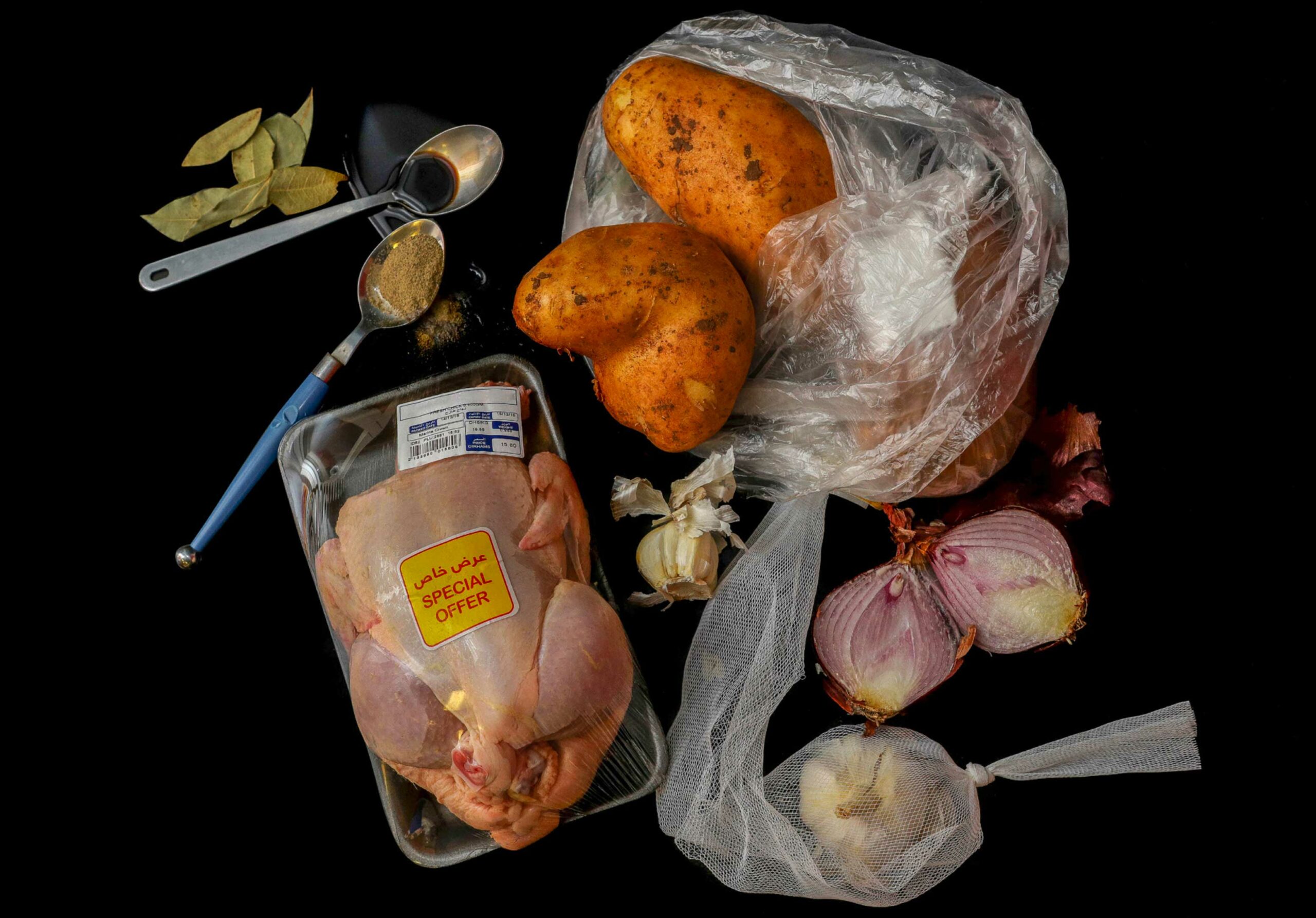
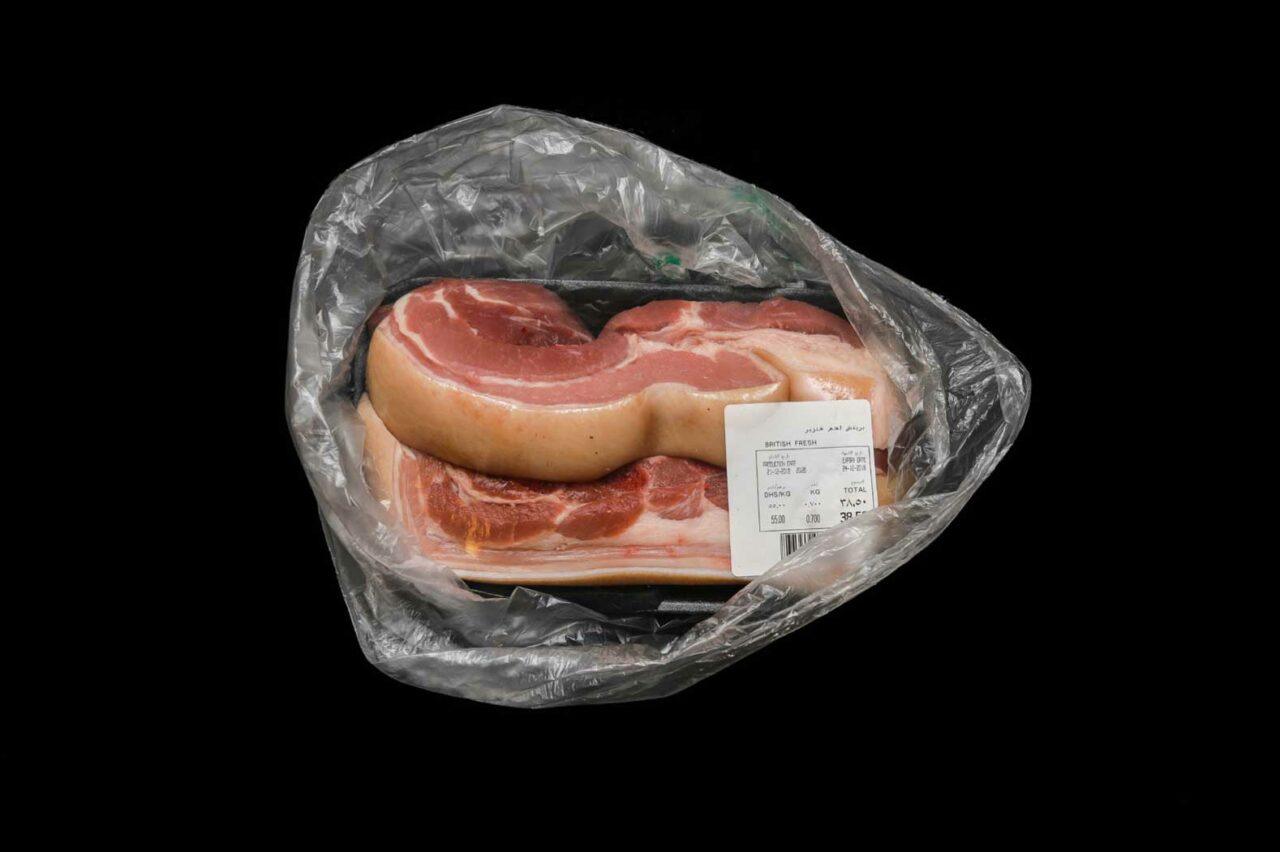
It isn’t to say that his current series, is devoid of a thumping and brimming of life that is akin to his earlier works. Vivid and vibrant, as it is punctured with longing and necessary levity all anchored on the Filipino staple here and abroad, the Adobo. Much like the stew that reminds Filipinos of home, the storytelling of Augustine Paredes is in parts saucy, sour, and maybe with a kick of spice that makes everything tie together in his homage to the life of being an OFW in Dubai. Presented in a series of conceptual and existential self-portraits and stills, this thoroughly post-modern exposition narrates how this atypical permanence has carved him into the artist, and most importantly man that he is now. Attempting to answer seemingly deceptive but philosophically-charged questions such as “Where are you from?” and “Will it make the Adobo better?”, his work necessitates an introspection that is of the essence in this day and age.
Developed under the Art Dubai program, the first and only of its kind in the UAE, this piece has actually been marinating in his head for a while back as I recall from our San Miguel-laced conversations last year. With a trove of experiences, memories, anecdotes, and photographs, Paredes was certain he wanted to tell a compelling story. How? He wasn’t quite sure. “Do it documentary-style, as an expose of sorts from a younger point-of-view,” I suggest, sipping the bottle I had been nursing far long than I intended. “Possible, but where and how would I show it?”
As anyone who has had a hand at cooking a good ‘ol serving of Adobo, in whichever way you see fit to your tastes, the stew needs a certain amount of time to simmer before the full burst of flavors really tie in together with the meat, garlic, soy sauce, vinegar and spices. There’s a reason why some argue that the longer it sits, the more delicious it becomes, which is perhaps why some can extend its lifeline to close to a week depending on their appetite. Since then, the idea gestated and grew, evolving accordingly, before it was finally ready to see the light of day in Dubai’s biggest art fair no less, Art Dubai 2019. Part of a group show under the theme, Mirror Mirror On The Wall: Contemporary Art And The City, Cooking Adobo in the Hea(r)t of 25.2048° N, 55.2708° E, debuted to great response, prompting even a hilarious encounter of someone asking Paredes if he was to perform his show through an actual cooking of Adobo. “Manimaho ta’g garlic,” he says in Bisaya, which translates to, “We’d smell of garlic.”
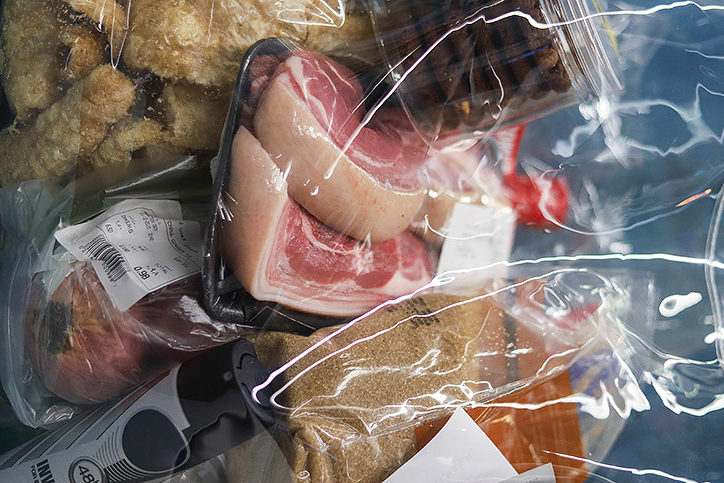
In art, among many aspects of life, we are told to make things personal. But as we progress and find nuance in the different trajectories thereafter, we learn that there is greater efficiency and effect when all that thumping and sometimes volatile energy is harnessed to a state that is malleable and easier to drape to the world. Make it personal, but don’t make it just about you, I realized. And just as the string of feelings and emotions continue to anchor many an artistic pursuit, such as that of Augustine Paredes and Cooking Adobo in the Hea(r)t of 25.2048° N, 55.2708° E, it becomes crystal clear that the stories we tell no longer become just about us, but rather of everyone who finds themselves taken and woven into this tapestry of tales we call our life.
Taking this opportunity, we ran an exchange with Augustine Paredes on art, migrant workers, and the concept of home beyond that of adobo. Read below for the rest of the interview:
We’ve discussed doing this story for a while now. What finally made you push it out and how did the concept and visual narrative evolve?
When I went back to the Philippines after almost 2 years in Dubai, it felt like a homecoming in two ways—I came home to a place where my body and my tongue belongs, and I came home to myself. When I came home I said to myself, ‘so this is how it feels to be a balikbayan. I’ve been working on the project of my life in Dubai as a Filipino migrant worker for the last two years, presenting it to different mentors and attending workshops. At the beginning I was very ambitious with this propaganda-esque notion, saying “I don’t want the Filipinos to be pushed back in the kitchen.” But over time, I realized no one can represent an entire country, let a lone a very diverse country like ours. So, I represented myself, my story, hoping that it would shed light to other people’s stories.
You tackled many topics in your portfolio of stories, why zero in on this for the exhibit and similar themes as of late?
I felt really strong about certain topics—home, belonging, belongings, and identity—especially because I’ve been here, alone and away from the comforts of home. I’m not the only migrant worker, there’s thousands of us around the world, and some may not have the luxury of time and energy to think about these things, or have a voice. I’m using my ways, making use of my art and story to share a story that some may resonate to.
What was the biggest adjustment translating your art from the Philippines to the Middle East?
My art in the Philippines are very personal and tightly intact with my queerness and sexuality. Whereas here, I couldn’t tell that kind of story because it’s illegal and the country has censorship. So, I had to tell a different story—clear of the smoke, sex, and alcohol—something more personal and requires more introspection.
Having traveled to many parts of the world, what made you find permanence in Dubai?
I still feel like Dubai is a temporary place, thus I travel often in search of a new place to call home. But this is the longest time I’ve spent in a city. I also felt like Dubai is very accepting of my potential, and also I’ve met many great people here—most importantly it’s brought out a very different side of me as a person, especially as an artist.
What was the biggest misconception that you had before working in Dubai? What have you learned since about the migrant plight since?
Reality inspired TV shows like MMK and Magpakailanman would portray migrant workers as slaves and struggling people, and I grew up thinking that. I was so afraid I was gonna be kawawa when I got here, but I was fine. Though I was struggling, it was a different kind of struggle—more emotional, rather than physical. I also learned that Dubai is a very tolerant and welcoming city, very open to young talents and appreciative of potentials. At least for me. Although I want to say, sometimes skin color and passports weigh heavier than your art and portfolio.
Moving forward, what do you want your art to evolve to? What other stories do you want to tell?
I’m currently being mentored by amazing photographers like Maggie Steber (Nat Geo), Tanya Habjouqa (Noor), Mohamed Somji (Gulf Photo Plus) and critic and writer Uzma Rizvi (Pratt University, NY), helping me be more rigorous and critical in my practice. I want to do and explore a different kind of reportage, documentary work through photography. Be in more exhibitions and finally release the self-published book that I’ve been working on since 2015.
What do you miss most of about home?
I miss my Mama the most, and my longing for that kind of love and home-ness are always translated to my work. I miss falling in love in the streets of Davao and Manila, and the warm feeling I get after being told, “Mahal kita.”
